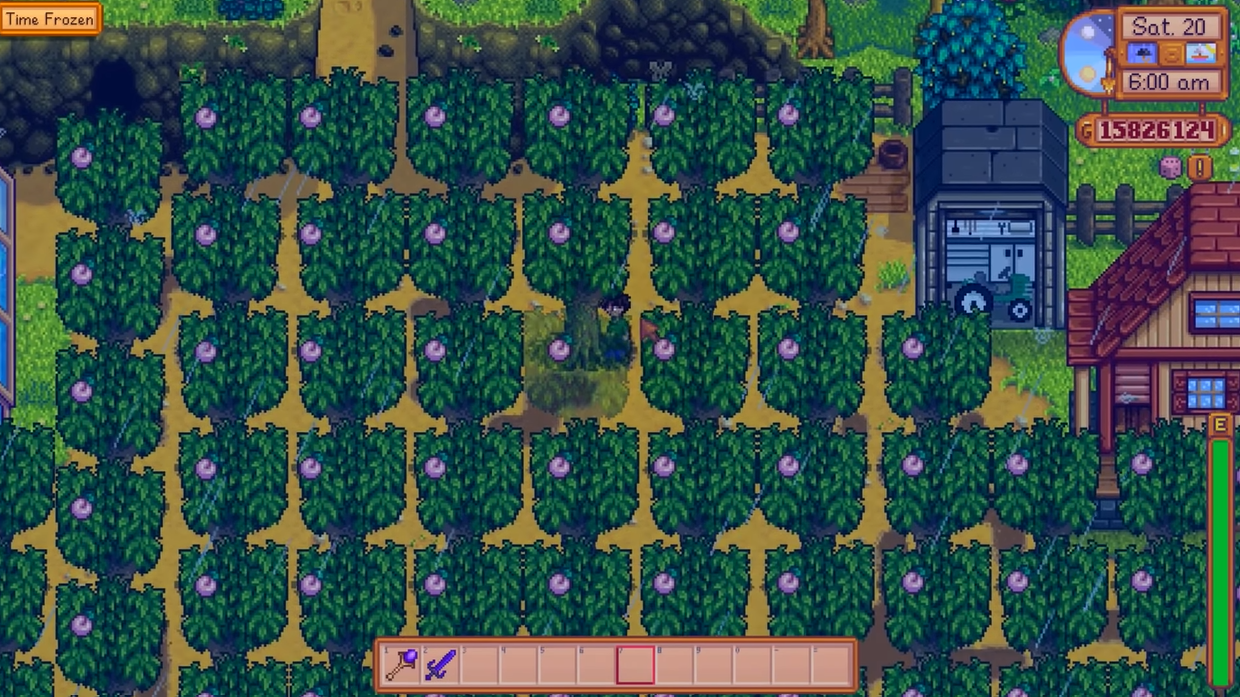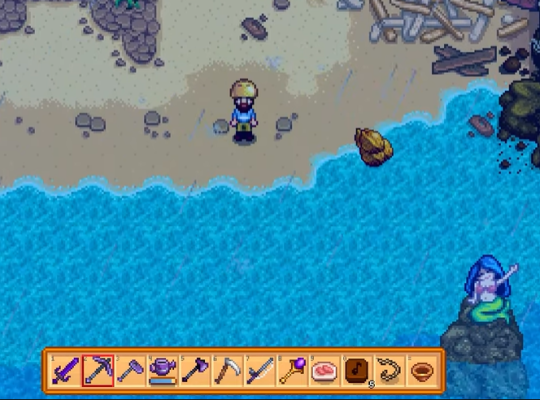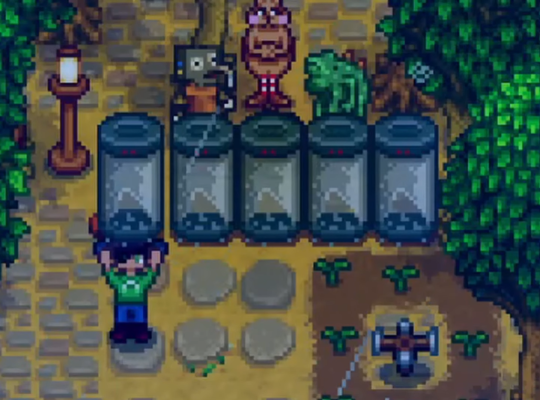Stardew Valley is a charming farming simulation game that immerses players in the joys of rural life. One of the most rewarding aspects of the game is cultivating and nurturing fruit trees, which offer many benefits.
In this article, we will explore the fascinating world of fruit trees in Stardew Valley, discussing their growth stages, harvest times, prices, and the various in-game fruit uses.
Fruit Quality & Price
As fruit trees in Stardew Valley mature, the quality of their produce improves. Initially, the trees yield regular quality fruit, but over time, they start producing silver, gold, and iridium quality fruits. These higher-quality fruits fetch higher prices, making them more profitable for players.
Additionally, if players have chosen the Tiller profession, they receive a 10% bonus when selling fruit tree fruit, further boosting their earnings. Those who have chosen the Artisan profession can turn these fruits into artisan goods for even greater profits.
Spring
Apricot Tree
The Apricot Tree is a delightful addition to any farm during the spring season. It goes through five growth stages, which take 28 days, before reaching maturity and bears fruit in the middle of the season.
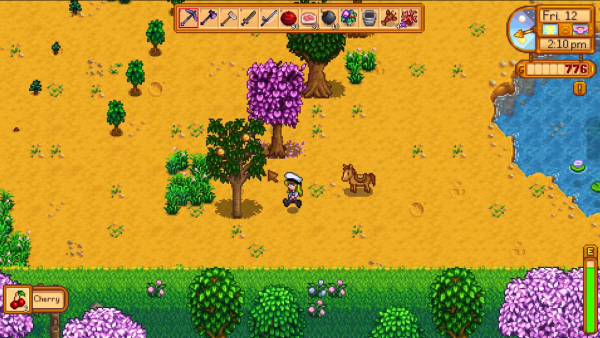
Apricots can be sold for a moderate price, providing a decent income source. Moreover, consuming an apricot restores energy and health, making it valuable for sustaining the player’s activities.
| Apricot | Selling Price | Tiller (+10%) | Energy and Health |
| Base Quality | 50g | 55g | +38 Energy, +17 Health |
| Silver Quality | 62g | 68g | +53 Energy, +23 Health |
| Gold Quality | 75g | 82g | +68 Energy, +30 Health |
| Iridium Quality | 100g | 110g | +98 Energy, +44 Health |
Apricots are also required for the Artisan Bundle and the Fresh Fruit Quest, making them an essential resource to progress in the game.
Cherry Tree
Like the apricot tree, the cherry tree progresses through four growth stages for 28 days and produces fruit in the Spring. Cherries can be sold reasonably, making them a worthwhile investment.

They also restore energy and health when consumed. It can be used for the Artisan Bundle at the Community Center Pantry.
| Cherry | Selling Price | Tiller (+10%) | Energy and Health |
| Base Quality | 80g | 88g | +38 Energy, +17 Health |
| Silver Quality | 100g | 110g | +53 Energy, +23 Health |
| Gold Quality | 120g | 132g | +68 Energy, +30 Health |
| Iridium Quality | 160g | 176g | +98 Energy, +44 Health |
Summer
Banana Tree
In the scorching summer months, the tropical Banana Tree thrives. This tree has five growth stages lasting 28 days, yielding fruit in maturity. Besides being a profitable crop, harvesting bananas in Stardew Valley provide a substantial energy and health boost when consumed.
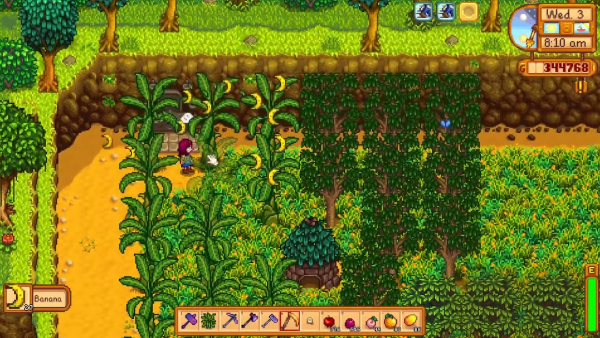
They are also used in the Banana Pudding recipe and can be used in the Island Obelisk crafting recipe for easy transportation to Ginger Island.
| Banana | Selling Price | Tiller (+10%) | Energy and Health |
| Base Quality | 150g | 165g | +75 Energy, +33 Health |
| Silver Quality | 187g | 205g | +105 Energy, +47 Health |
| Gold Quality | 225g | 247g | +135 Energy, +60 Health |
| Iridium Quality | 300g | 330g | +195 Energy, +87 Health |
Mango Tree
With their lush foliage and juicy fruits, mango trees are another summer delight. Growing through five stages in 28 days, these trees bear fruit in Summer.
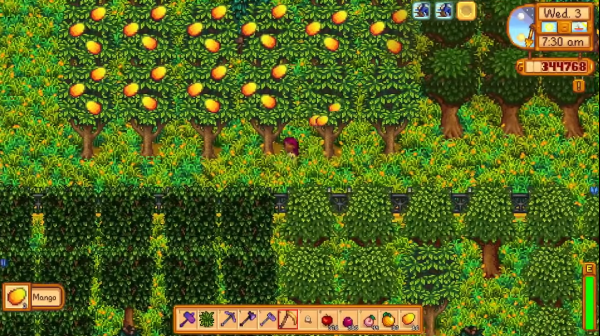
In addition to their selling potential, Leo, one of the game’s characters, highly valued mangoes, making them an ideal gift option. Mangoes are also utilized in the recipe for Mango Sticky Rice.
| Mango | Selling Price | Tiller (+10%) | Energy and Health |
| Base Quality | 130g | 143g | +100 Energy, +45 Health |
| Silver Quality | 162g | 178g | +140 Energy, +63 Health |
| Gold Quality | 195g | 214g | +180 Energy, +81 Health |
| Iridium Quality | 260g | 286g | +260 Energy, +117 Health |
Orange Tree
The vibrant orange tree brightens up any farm during the summer months. With five growth stages lasting 28 days, it produces the bright Orange. P Orange consumption restores energy and health and can be contributed to the Artisan Bundle.
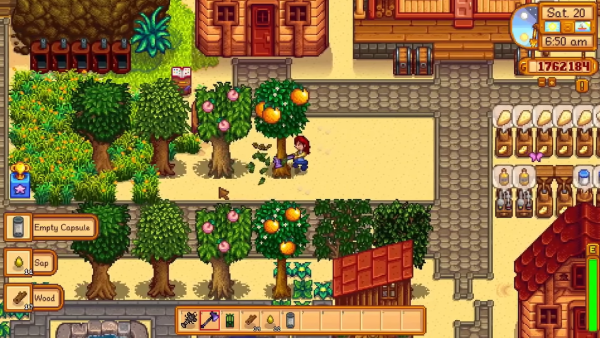
Moreover, Gus, a character in the game, loves oranges, making them a thoughtful gift choice to give him.
| Orange | Selling Price | Tiller (+10%) | Energy and Health |
| Base Quality | 100g | 110g | +38 Energy, +17 Health |
| Silver Quality | 125g | 137g | +53 Energy, +23 Health |
| Gold Quality | 150g | 165g | +68 Energy, +30 Health |
| Iridium Quality | 200g | 220g | +98 Energy, +44 Health |
Peach Tree
Peach trees, synonymous with summertime, follow the same growth pattern as oranges. Peaches offer substantial energy and health restoration, making them an excellent player resource.
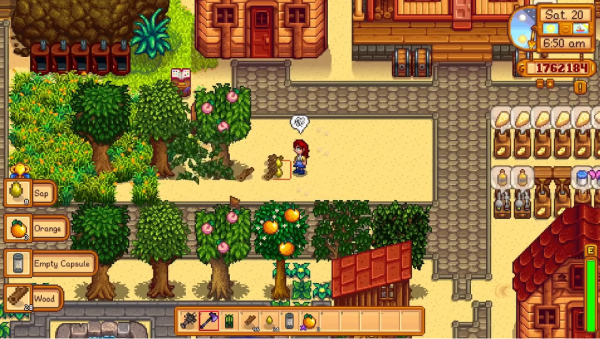
Furthermore, they can be given to the Artisan Bundle and are highly appreciated by Robin, the town carpenter, with whom players can develop a good friendship.
| Peach | Selling Price | Tiller (+10%) | Energy and Health |
| Base Quality | 140g | 154g | +38 Energy, +17 Health |
| Silver Quality | 175g | 192g | +53 Energy, +23 Health |
| Gold Quality | 210g | 231g | +68 Energy, +30 Health |
| Iridium Quality | 280g | 308g | +98 Energy, +44 Health |
Fall
Apple Tree
As the leaves change color, the apple tree takes center stage on the farm. Progressing through five stages for 28 days, it produces fruit in the midst of fall.
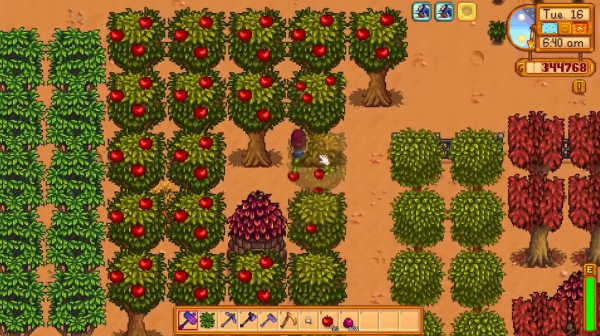
In addition to their selling potential, apples are used in the Fodder Bundle and can be contributed to the Artisan Bundle as well. It’s also an essential ingredient for Cranberry Candy.
| Apple | Selling Price | Tiller (+10%) | Energy and Health |
| Base Quality | 100g | 110g | +38 Energy, +17 Health |
| Silver Quality | 125g | 137g | +53 Energy, +23 Health |
| Gold Quality | 150g | 165g | +68 Energy, +30 Health |
| Iridium Quality | 200g | 220g | +98 Energy, +44 Health |
Pomegranate Tree
Pomegranate trees bear fruit alongside apple trees in the fall. Five growth stages lasting 28 days provide players with a bountiful harvest. Pomegranates restore energy and health, making them a valuable resource.
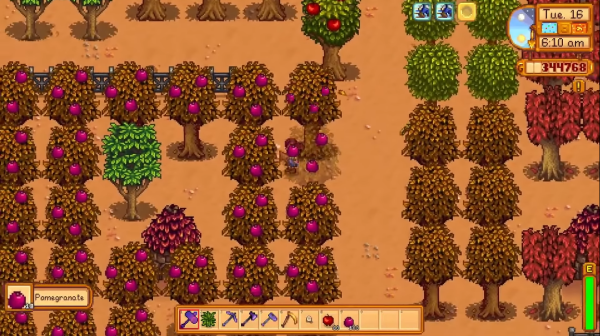
Additionally, they are required for the Enchanter’s Bundle or contributed to the Artisan Bundle, making them essential for progression.
| Pomegranate | Selling Price | Tiller (+10%) | Energy and Health |
| Base Quality | 140g | 154g | +38 Energy, +17 Health |
| Silver Quality | 175g | 192g | +53 Energy, +23 Health |
| Gold Quality | 210g | 231g | +68 Energy, +30 Health |
| Iridium Quality | 280g | 308g | +98 Energy, +44 Health |
Effects of Weather on Fruit Trees
Immunity to Weather Conditions
Unlike other crops, fruit trees in Stardew Valley are immune to most weather conditions. Whether it’s the scorching heat of summer, a windy day, or the torrents of rain, these resilient trees continue to thrive and produce their bountiful harvests.
This immunity provides players with a consistent and reliable source of income throughout the year, making fruit trees an attractive investment on their farms.
Lightning Strikes and the Transformation into Coal Producers
While fruit trees may be immune to most weather conditions, thunderstorms bring forth an extraordinary event that can completely alter the nature of these trees.
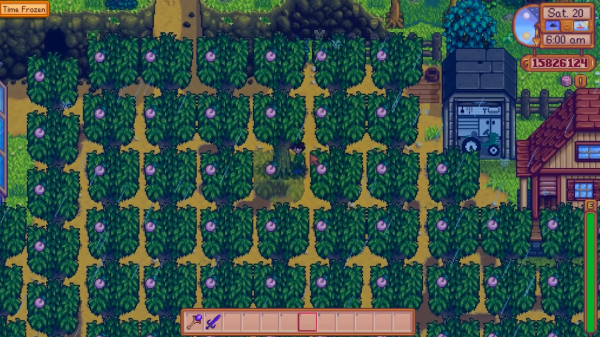
During a thunderstorm, there is a chance that a lightning strike will occur, temporarily transforming a fruit tree into a coal producer. This phenomenon adds an exciting twist to the gameplay [1], offering players an unexpected fuel source and income.
The affected fruit tree undergoes a striking transformation when a lightning strike occurs. Its leaves wither, and the tree becomes enveloped in a burnt appearance.
Over the course of the 4 days, the tree’s appearance resembles a charred and burnt tree. Instead of producing fruits, it now produces coal, a valuable resource for crafting and smelting.
The temporary nature of this transformation means that the coal-producing tree will eventually revert to its original state. After 4 days, the effects of the lightning strike fade away, and the tree begins to recover.
New buds sprout, leaves return, and the tree once again becomes a flourishing fruit-bearing entity.
Managing Lightning Strikes and Maximizing Benefits
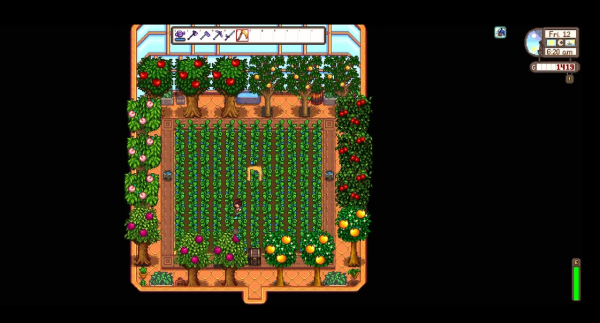
To mitigate the impact of lightning strikes, players can adopt several strategies. One option is to strategically plant a few additional fruit trees to compensate for any temporary loss of production.
This ensures a continuous supply of fruits and maintains a stable income even during the coal-producing phase. Furthermore, players can strategically use lightning rods throughout their farm to attract lightning strikes away from valuable fruit trees.
Lightning rods act as lightning conductors, absorbing the electrical charge and transforming it into battery packs, another valuable resource in the game. By diverting lightning strikes towards these rods, players can protect their fruit trees while reaping the benefits of the lightning in the form of batteries.
Conclusion
Fruit trees in Stardew Valley offer players various benefits, from financial gains to energy restoration and inclusion in bundles and recipes. With each passing season, these trees grow and bear fruit, becoming valuable assets for any farm.
By understanding their growth stages, harvest times, and in-game uses, players can maximize their profits and enjoy the diverse offerings of these delightful trees. So, embrace the beauty and rewards of fruit trees, and watch your farm flourish in abundance.

